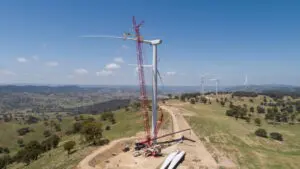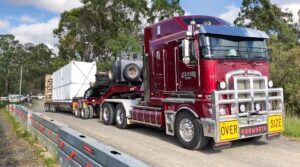Key Takeaways
- Pacific Green is developing significant battery projects in Australia, including the Limestone Coast and Portland projects.
- The first stage of the Limestone Coast Energy Park, a 250 MW two-hour project, is currently underway.
- Quinbrook Infrastructure Partners is also planning to develop eight-hour solar batteries, claiming that advancements in lithium-ion technology make this feasible.
The Australian head of UK energy storage outfit Pacific Green, the developer of the biggest committed battery project in South Australia, says the company has struggled to make projects with four-hours of storage “commercially viable,” as plans for much longer duration projects – including eight hours – start to emerge.
Pacific Green has big plans for big batteries in Australia, including the two-stage Limestone Coast project in South Australia and the Portland project across the border in Victoria.
Speaking at Solar & Storage Live in Brisbane on Wednesday, the managing director of Pacific Green’s Australian operations, Joel Alexander, detailed the progress on these two projects, and offered some insight into the challenges of developing big battery projects – in particular, how to make them bankable.
The first stage of Pacific Green’s giga-scale Limestone Coast Energy Park project – the 250 megawatt (MW), two-hour Limestone Coast North Energy Park – is underway after being bought by Intera Renewables, the clean energy investment platform of Australian asset manager, Palisade Investment Partners.
In a separate deal, Pacific Green has also secured a long term “tolling” Power Purchase Agreements with Zen Energy for off-take of 100 per cent of the Limestone Coast North BESS.
A second-stage four-hour, 250 MW/1000 MWh Limestone Coast West BESS is planned for installation at the same location.
The company’s 1,000 MW/2,500 MWh Portland Energy Park is a four-stage project that will co-locate three two-hour battery energy storage systems (BESS) and one four-hour BESS. This project is finalising development approval with construction expected to commence in March 2026.
Alexander says that while Pacific Green have plans to develop at least one four-hour BESS at both of the energy parks they have planned for either side of the Heywood interconnector linking South Australia and Victoria, this has not been an easy call to make.
“Four hours is a pretty hot topic in the market at the moment, [but] we’re struggling to see it commercially viable, I think is probably the honest truth,” he told the conference.
“You really have to make the model work hard. In fact, you have to make all aspects of the project work really hard.
“To make four hours work it’s a high capital commitment. At 1000 megawatt-hours, you know, that’s probably close to $600 million to $700 million of capital. So … you really limit your amount of funds that can actually acquire this project, and procurement needs to be really dialed in to make the economics work.
“So we think we’ll continue to see to our systems being primarily the two-hour system in Australia.
“There’s now eight hour systems,” Alexander added. “We’re not doing eight hour systems, so I’ll probably reserve my comment on eight hours. But given we’re finding four hours a challenge, we’re not quite sure how eight hours stacks up just yet.”
But James Allan, a senior director at Quinbrook Infrastructure Partners, says the falling costs of lithium ion batteries means that eight-hour duration is now “becoming feasible to do with that technology.”
Earlier this month, Australian infrastructure investor Quinbrook unveiled plans for a series of massive eight-hour solar batteries, including three in Queensland – in Brisbane and the industrial centres of Gladstone and Townsville – and possibly two in NSW.
The BESS rollout would total 3 gigawatts and 24 gigawatt hours of storage capacity, with two thirds of it in the sunshine state, and a further gigawatt and 8 GWh in NSW. Another may be built in the Northern Territory, where Quinbrook is involved in the first, locally focused stage of the massive Sun Cable project.
“What we want to do is take this excess [solar] in the middle of the day and shift it into the night period, ideally, all the way around the clock,” Allan told Solar & Storage Live in a separate presentation on Wednesday.
“Even getting to the point where we can cover 16 hours of the day … is a huge step change for some of these off takers that we’re talking to. And so what we would like to have here is at least an eight hour solution.”
Allan says Quinbrook has been working with China energy storage giant CATL to develop a product that “does exactly that,” as part of a major battery deal the two companies revealed in November of last year.
Allan says CATL’s new eight-hour produce, called the NQB – “QB is for Quinbrook, which we’re quite happy about” – will have “world-beating” technology specs that can deliver long duration battery storage at a cost competitive price.
This includes changes to battery cells that means they can be kept cool with the use of fans, instead of chillers
“That makes a very, very big difference,” Allan says. “If the batteries can survive time scales like 20-25 years without needing to have chillers, which consume a lot of electricity and reduce the efficiency of the system, all of that goes towards much better economics.”
Want the latest clean energy news delivered straight to your inbox? Subscribe to our free daily newsletter.








